These deep-fried deviled eggs, in Italy known as Uova alla Monachina (meaning nuns instead of devil), trace their roots back to 18th-century Naples, a period when the intricacies of French cuisine cast a significant spell on aristocratic kitchens. Beyond their crispy outer layer, these eggs reveal an inner decadence of either rich béchamel or smooth ricotta. Serving these as an aperitif offers a delectable glimpse into Italy's storied culinary past, making any occasion memorable.
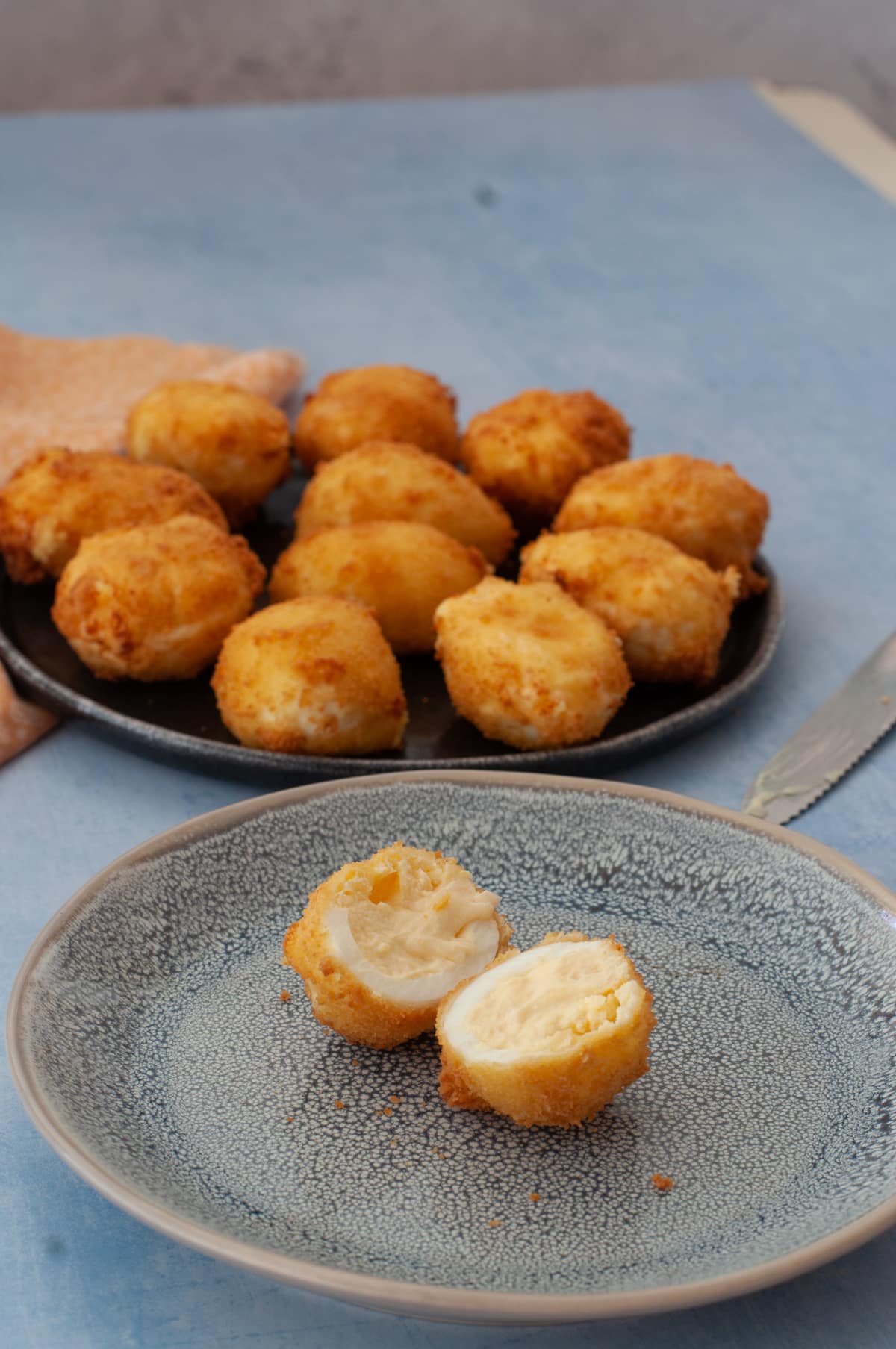
Jump to:
This egg recipe doesn't marry the traditional deviled egg filling with the art of deep frying like the other recipes.
While the classic deviled eggs typically showcase a filling of egg yolk mixed with ingredients like mayonnaise and mustard, the Italian "Uova alla Monachina" takes a different, more heavenly approach.
Translated as "Little Nun's Eggs," this dish suggests a more angelic flair, contrasting the 'devilish' counterpart and nodding to its delicate, pure ingredients that seem divinely inspired.
Instead of fried egg whites topped with the filling, the filled egg halves are reshaped to resemble a whole egg, coated with the stuffing and then deep-fried to perfection.
For more Italian deep-fried appetizers, you can check the recipes: fried pizza, fried dough crispelle, fried mozzarella, fried calamari, fried eggplants, fried zucchini flowers
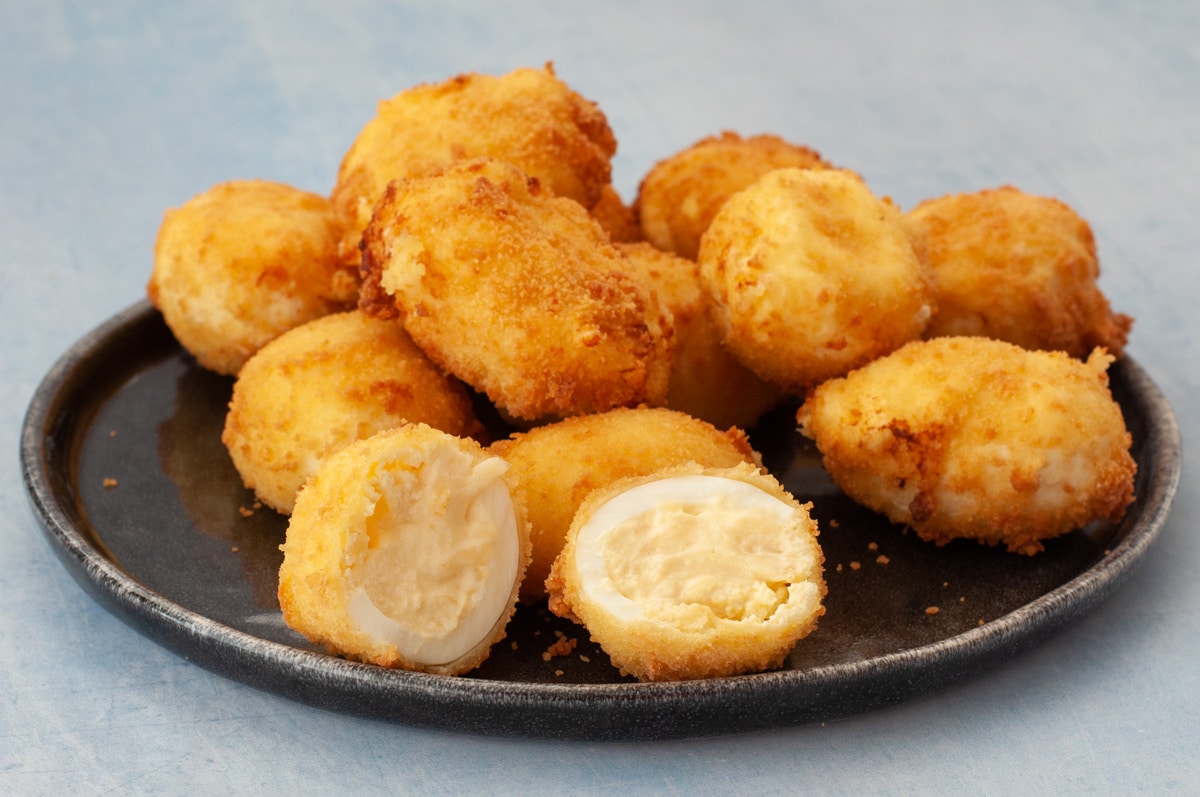
Ingredients
These are the ingredients you need. If you wish, you can replace the ricotta with a bechamel sauce.
If you do so, make sure you make a firm bechamel sauce, and you can read the article: white roux and its related mother sauce for instructions.
- Hard-boiled eggs: These serve as the base of the dish, typically ranging from 6 to 12 for most recipes, providing ample portions for sharing.
- Ricotta Cheese: A soft, creamy Italian cheese that lends a mild, fresh flavor to the filling; this can be substituted with bechamel for a smoother, richer texture.
- Grated Parmesan Cheese: Introduces a sharp and nutty taste, elevating the overall depth of the filling.
- Nutmeg: This aromatic spice offers a warm and subtly sweet flavor, complementing the cheeses beautifully.
- Salt & Pepper: Essential seasonings that enhance the ingredients' natural flavors and can be adjusted according to one's preference.
For coating:
- Regular Breadcrumbs: Provide the exterior crunch, turning golden when fried, and adding a delightful textural contrast to the creamy filling. You can also use panko breadcrumbs
- All purpose Flour: Used for dredging, it prepares the eggs for the subsequent coating steps, ensuring the bread crumbs adhere perfectly.
- Eggs (separate from the ones being boiled): Beaten to create an egg wash, they act as a binding agent between the flour and bread crumbs, guaranteeing a uniform coating.
- Vegetable Oil: Chosen for frying due to its neutral flavor, it allows the ingredients' tastes to shine through while achieving a crisp finish.
See recipe card for quantity

Equipment Needed
The equipment you need are:
- Pot: to boil the eggs
- Egg Timer: A clever tool to have a perfect hard-boiled egg each time. You place it in the pot with the eggs and it changes its color to indicate the yolk's consistency, whether runny or hard-set.
- Bowl: Essential for combining and smoothing out your filling
- Deep Fryer or Large Deep Skillet: Key equipment for achieving that perfectly crispy exterior, immersing the eggs fully in hot oil for an even golden finish.
- Slotted Spoon: An indispensable tool for safely retrieving deep-fried items from hot oil, especially if you're without a deep fryer basket.
A deep fryer is very convenient for larger gatherings because it offers consistent temperature control, ensuring every batch is fried to perfection.
Its sizable capacity allows multiple items to be fried simultaneously, speeding up the process and delivering hot, crispy treats in bulk.
Moreover, many deep fryers come with built-in filtration systems, keeping the oil cleaner longer and ideal for extended frying sessions.
The presence of a fryer basket also aids in the easy and safe retrieval of fried items, minimizing the mess and maximizing efficiency, ensuring your guests aren't left waiting for their delectable fried delights.

Instructions
Boiling the Eggs

- Place eggs in a pot of cold water.

- Bring to a boil, then lower the heat and simmer for about 9-12 minutes.
Hint: I am using an egg timer; the eggs are hard-boiled when it turns white
- Transfer the boiled eggs to a bowl of ice water (or running water) to cool.
- Peel the eggs once cooled.
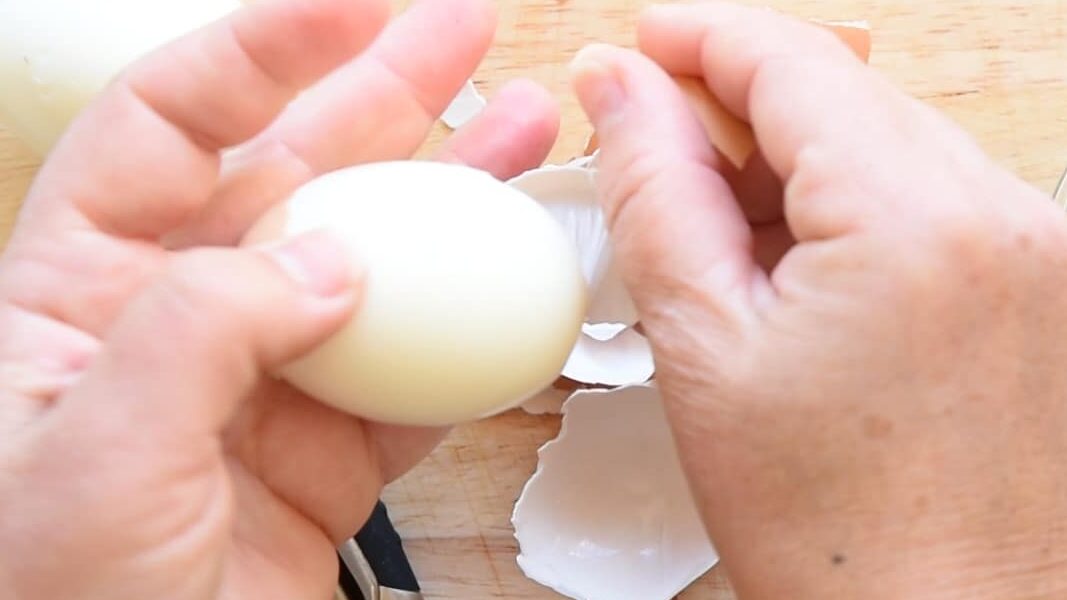
Preparation of Filling
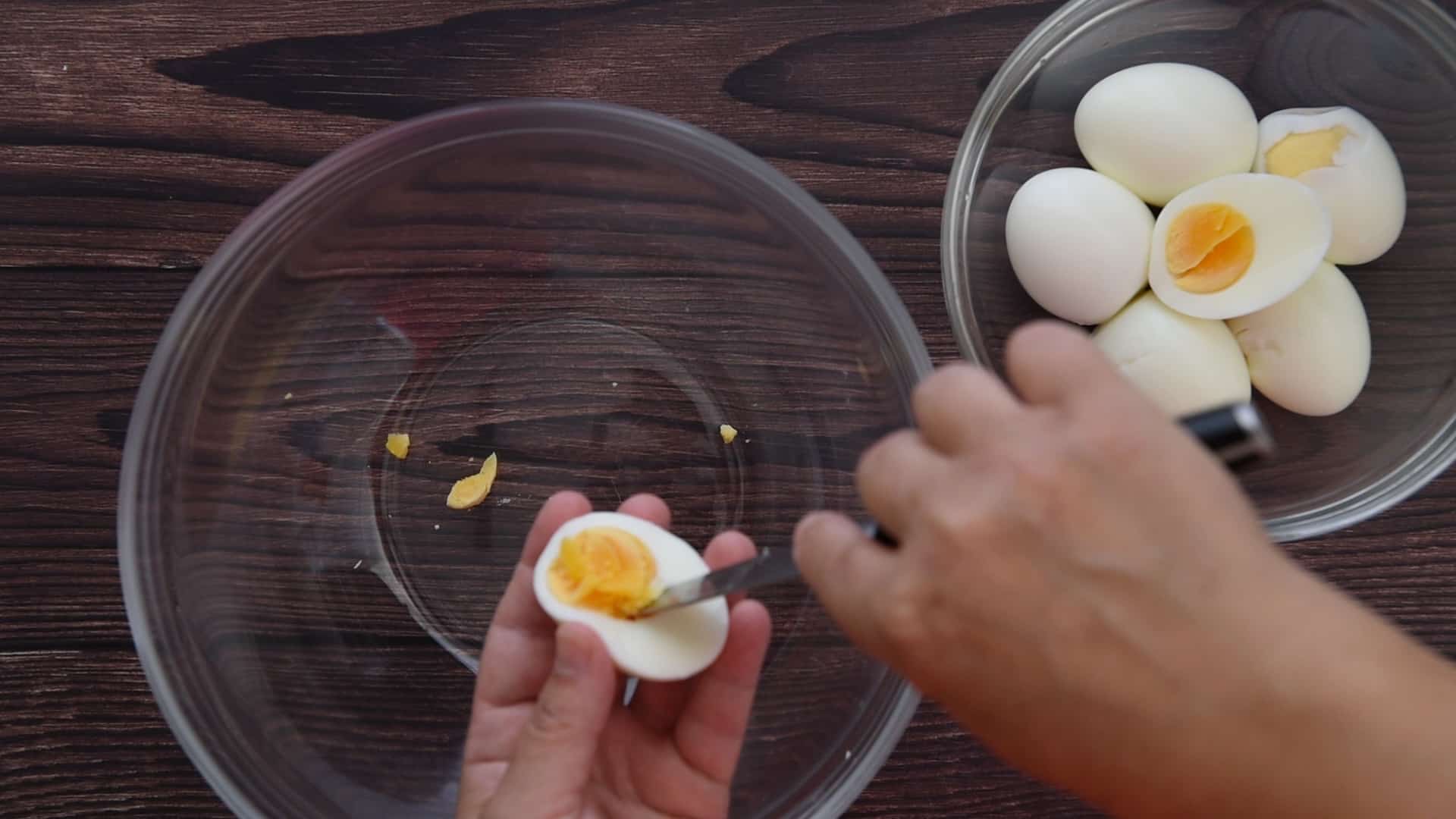
- Cut boiled eggs in half lengthwise and remove the yolks.

- Mash the yolks with the back of a fork in a medium bowl.
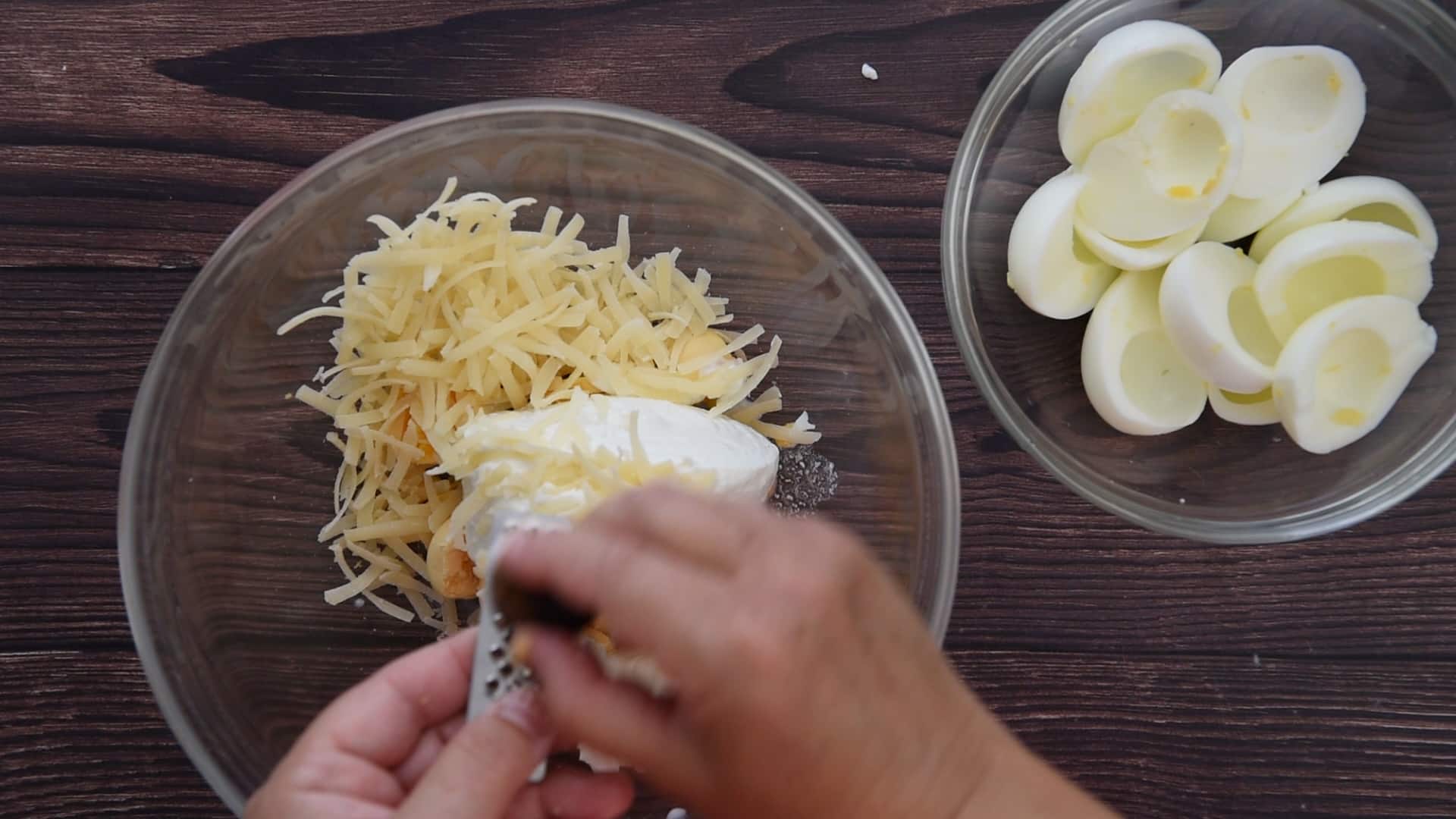
- Add ricotta cheese, Parmesan cheese, nutmeg, salt, and pepper.
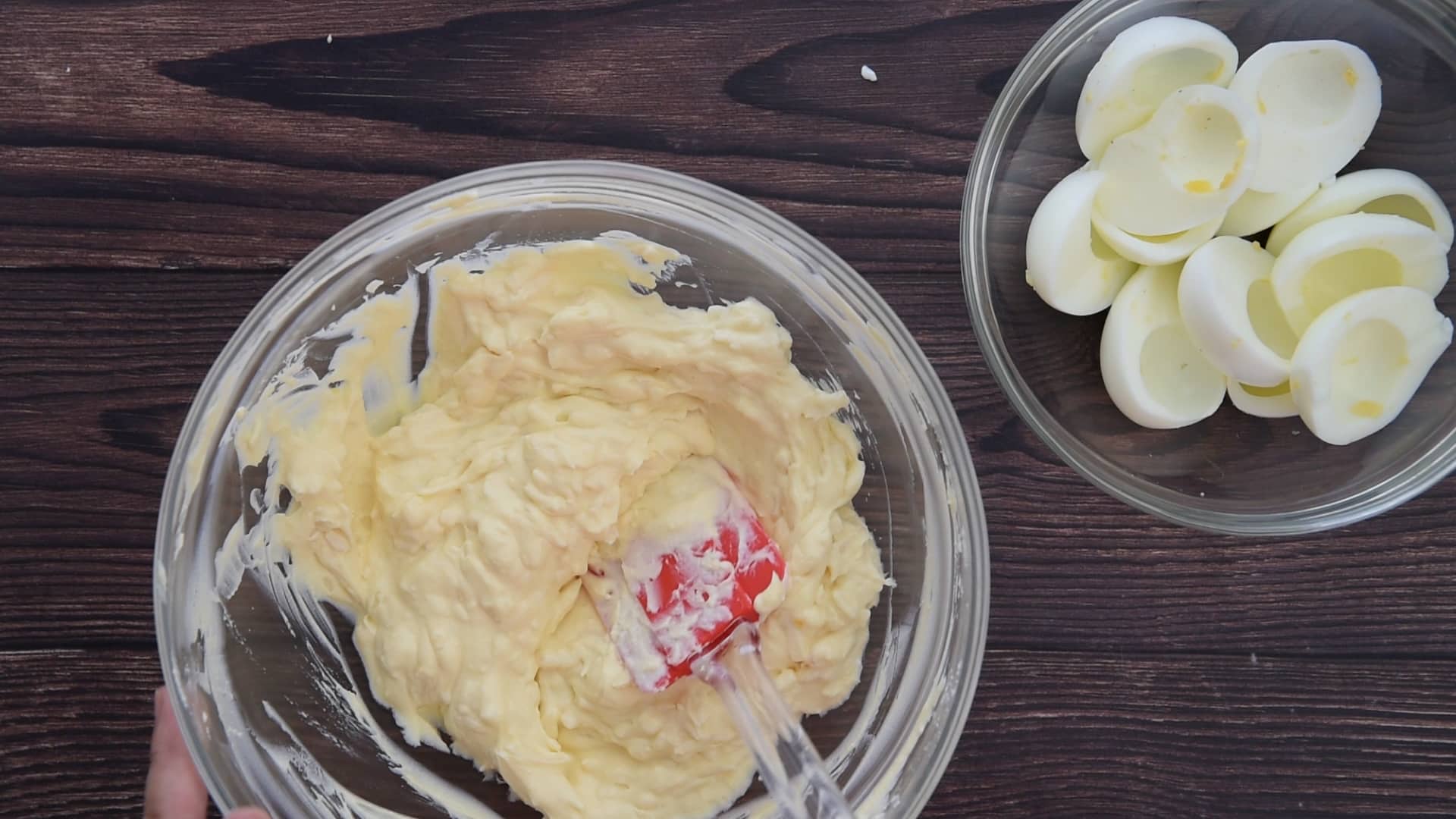
- Mix until smooth.
Filling and breading the Eggs

- Prepare the dredging station with three separate shallow bowls: one with flour, one with beaten eggs, and one with bread crumbs.

- Fill each egg white half with the egg yolk mixture
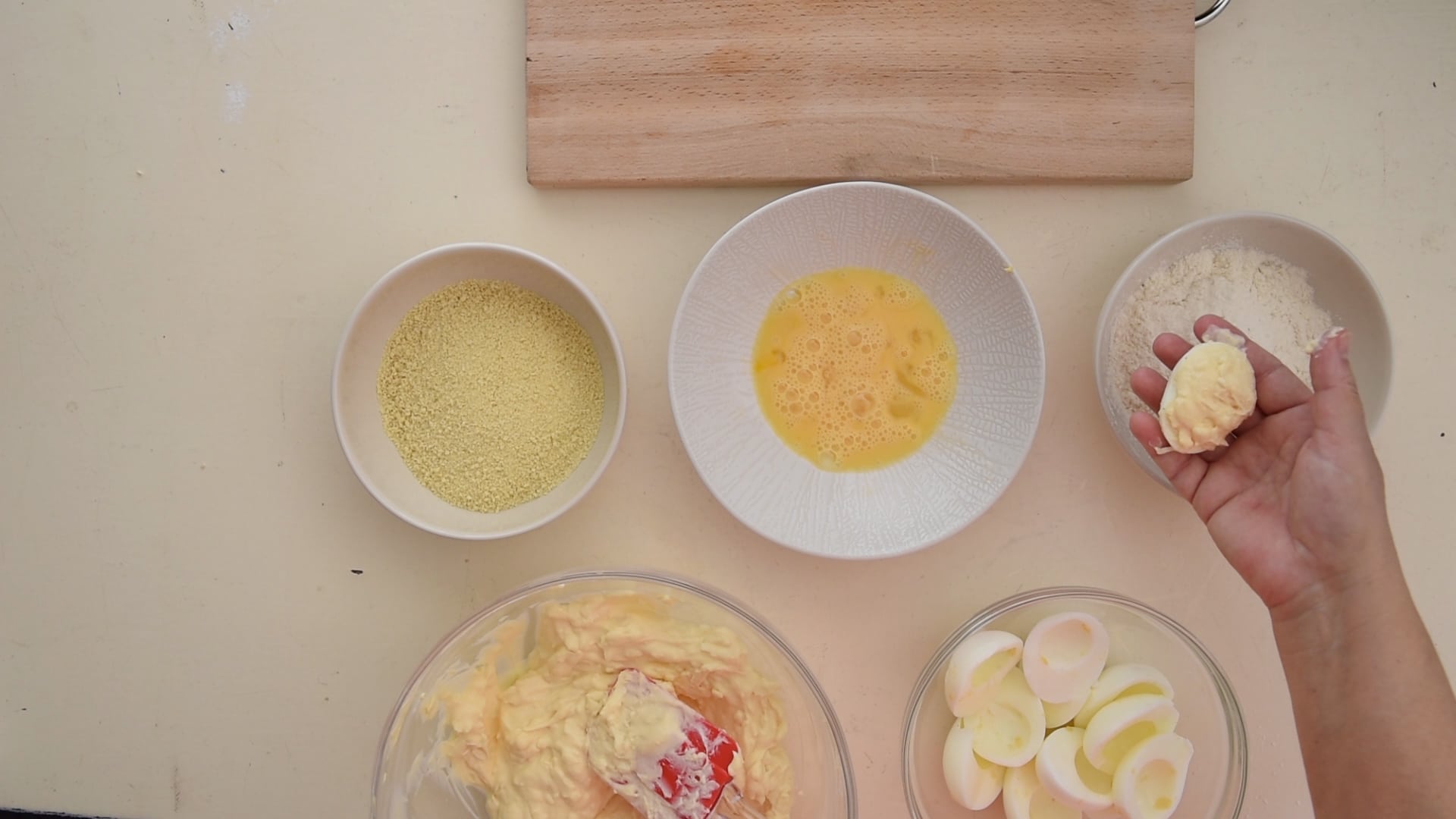
- Use enough stuffing to shape it into a whole egg.
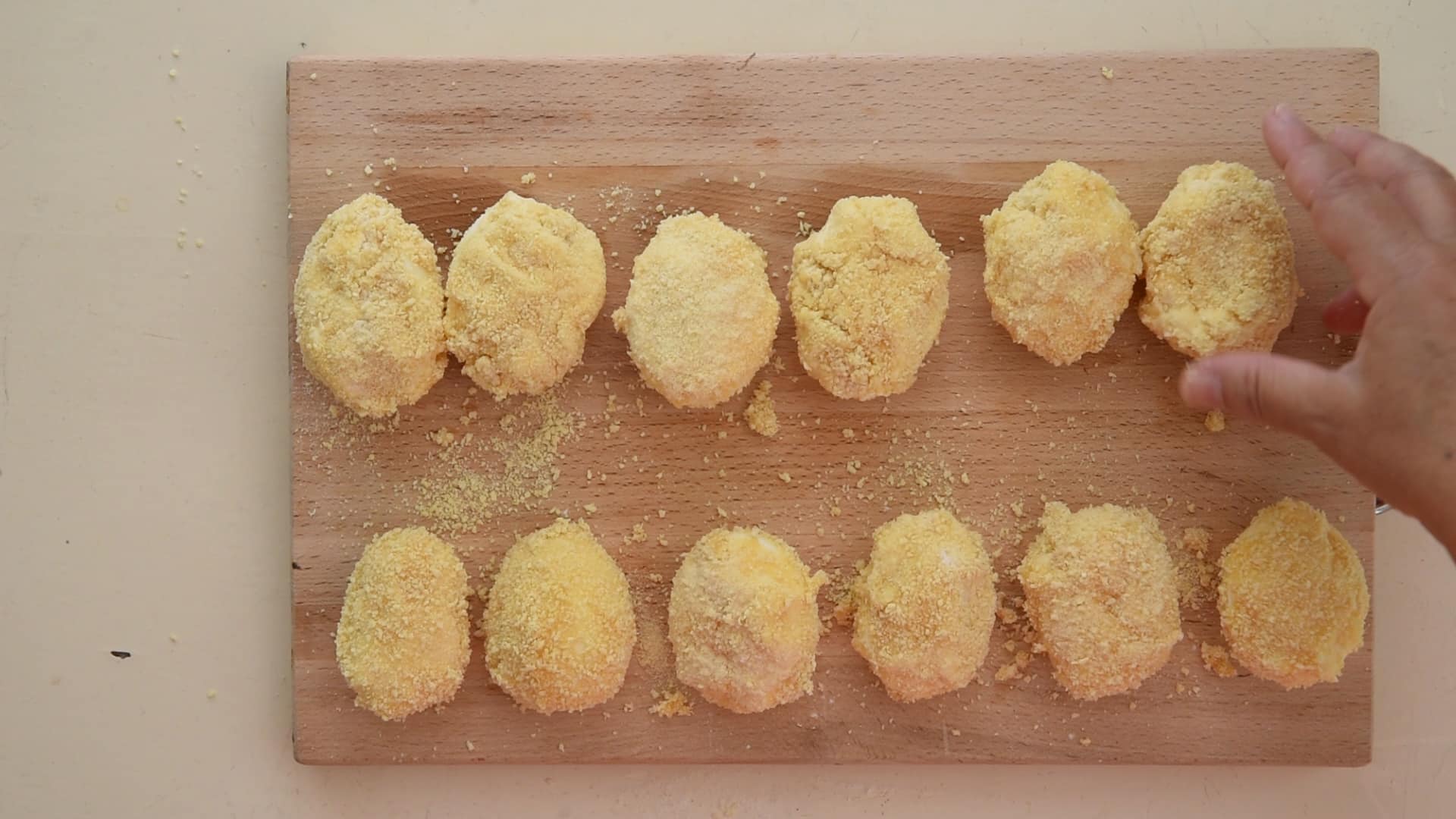
- Dredge each reconstructed egg in flour, dip in the beaten egg, and coat with bread crumbs.
Frying the Eggs

- Heat oil in the deep fryer or skillet to 350°F (175°C).

- Carefully place a few breaded eggs in the hot oil.

- Fry until golden brown, turning occasionally to ensure even cooking.

- Remove with a slotted spoon and place on paper towels to drain excess oil.
How to serve
These crispy eggs are best served hot immediately after frying to ensure the most pronounced contrast between the crispy exterior and the creamy filling.
Plating them on a white dish can accentuate their golden hue, making them even more enticing.
In traditional Italian dining, fried foods are often enjoyed in their purest form, complemented only by a few drops of freshly squeezed lemon juice to highlight their flavors, but it wouldn't be appropriate with this delicate egg recipe.
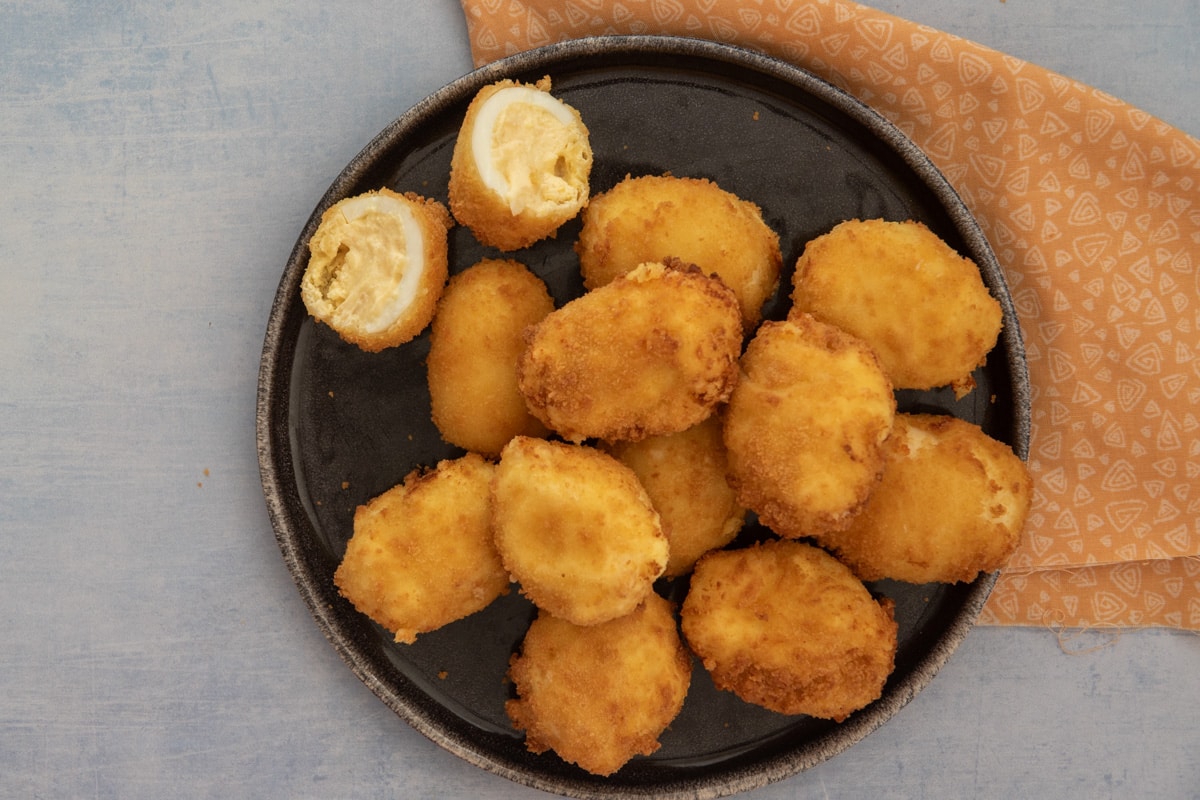
However, for those who enjoy a modern twist, mustard mayo introduces a tangy dimension that pairs beautifully with the eggs.
If you're curious about this dijon mustard mayo twist, discover its mouthwatering recipe under homemade mayonnaise on our site.
Focus on lighter, creamier and/or spicy accompaniments that won't overshadow the delicate flavors of the deviled egg ricotta filling.
If you find yourself with leftover filling, don't let it go to waste!
It makes an exquisite spread for crostini or bruschetta, offering another delightful way to enjoy the flavors.
Lastly, pair the eggs with a crisp white wine or a sparkling beverage to balance out the richness and elevate the dining experience.

Tips and Variations
Uova alla Monachina is celebrated in the annals of Italian cuisine with two distinct versions, each championed by a revered culinary tome.
Here's a closer look:
- "The Silver Spoon" Version: This rendition uses bechamel as the main filling component. The creamy and smooth bechamel offers a luxurious mouthfeel, lending the deviled eggs a silky texture that melds harmoniously with the egg white.
- "Talismano della Felicità" Version: This variant champions ricotta as its filling's cornerstone. Ricotta's more robust, grainy texture means it's not just a taste choice but a structural one. Its solidity allows one to reshape the egg halves, effectively recreating a 'whole' egg appearance.
In line with traditional Italian culinary values, simplicity is key in the flavors of "Uova alla Monachina".
Here are some guidelines to ensure authenticity and taste:
- Avoid Over-Seasoning: Avoid overpowering ingredients like garlic powder or chili powder in the egg mixture. These strong flavors can mask the delicate balance of the original recipe.
- Dip Choices: Given that these deviled eggs already incorporate the flavors of Parmesan and ricotta, it's best to steer clear of other dairy additions. Sweet pickle relish, sour cream, and Greek yogurt might be common in other variations of deviled eggs, but they aren't appropriate for this traditional Italian dish.
Remember, the charm of "Uova alla Monachina" lies in its elegant simplicity.
Respecting the traditional ingredient list ensures an authentic and delicious culinary experience.
Best to eat immediately but can be stored in the fridge in an airtight container for 3 days
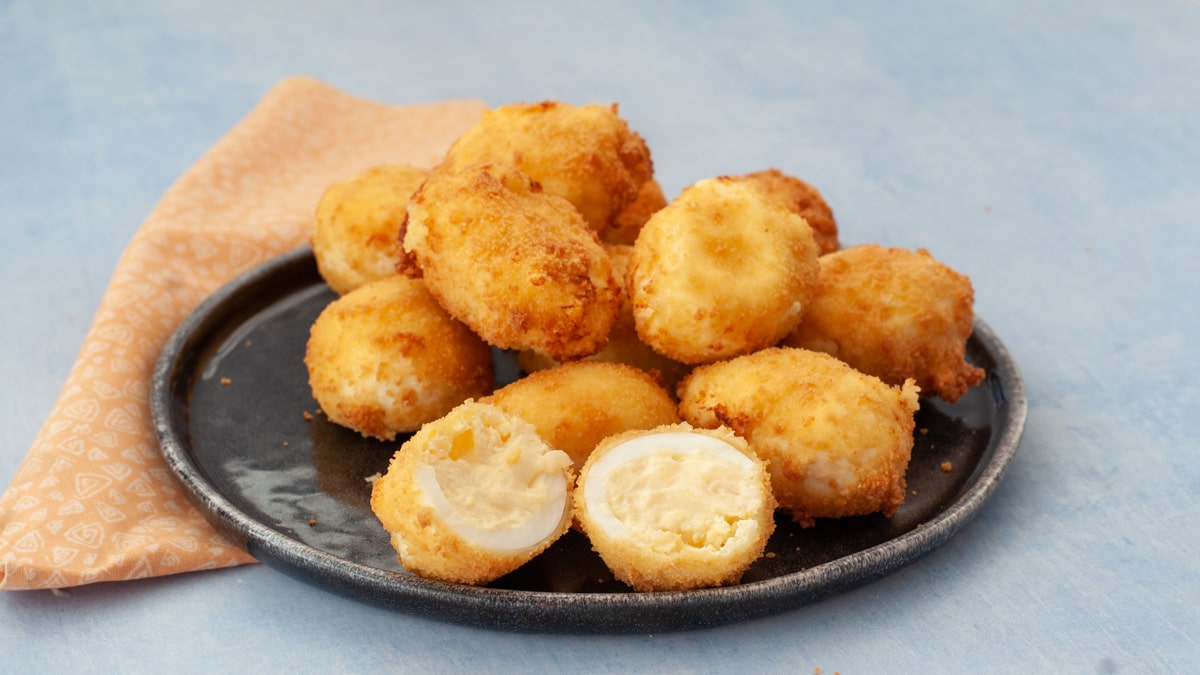
The tradition of Neapolitan fried food
Neapolitan fried food is rooted in this coastal city's bustling streets and vibrant history, where frying is not merely a cooking method but an art form served in a humble brown paper cone called Cuoppo.
It is the quintessential vessel for a cornucopia of fried delights that captures the essence of Naples.
As if plucking treasures from the sea and land, each cuoppo brims with an array of delicacies—from crispy seafood to golden bites of mozzarella, and from soft dough fritters to tiny morsels of zucchini.
Each item, perfectly fried to a golden hue, harmonizes to create a symphony of textures and flavors.
However, these deep fried deviled eggs appear to have a refined lineage, the filling options range from the humble ricotta cheese to the intricate bechamel sauce, hinting at a more cultured culinary ancestry with French origins.
The influence of French gastronomy on Neapolitan cuisine can be traced back to the Monzù, chefs who, trained in the art of French cooking, followed the dethroned French Bourbons into exile in the Kingdom of the Two Sicilies.
These chefs, affectionately termed "Monzù" – an adaptation of the French word "monsieur" – were integral to aristocratic kitchens, underscoring the deep admiration for French culinary traditions among the region's elite.
If you are interested in more Italian street food, you can read: 32 Most Popular Italian Street Food Recipes To Try
Or to discover more traditional regional Italian dishes: History Of Traditional Italian Food By Region

Monachina: A Glimpse into its Name
In the era preceding Italy's unification in 1870, the South of Italy was governed by the principle of majorasco.
This hereditary rule dictated that family wealth was the sole privilege of the eldest son, often relegating younger siblings, even from affluent backgrounds, to anticipated poverty.
For these younger nobles, the idea of manual labor for sustenance was an alien concept, hence, a significant number turned towards ecclesiastical careers for solace and sustenance.
Within the confines of monasteries, princes, barons, and counts' offspring attempted to maintain a semblance of their aristocratic lifestyle.
Therefore even the monastery meals were sophisticated, often prepared by a monzu, who was much like today's top chef.
The name "monachina," meaning "little nun," could stem from this blend of simple monastic life and culinary elegance.
Federico De Roberto's "The Viceroys" encapsulates this dynamic, vividly depicting monks relishing life's finer pleasures: “The monks did the art of Michelasso: eat, drink and go for a walk.
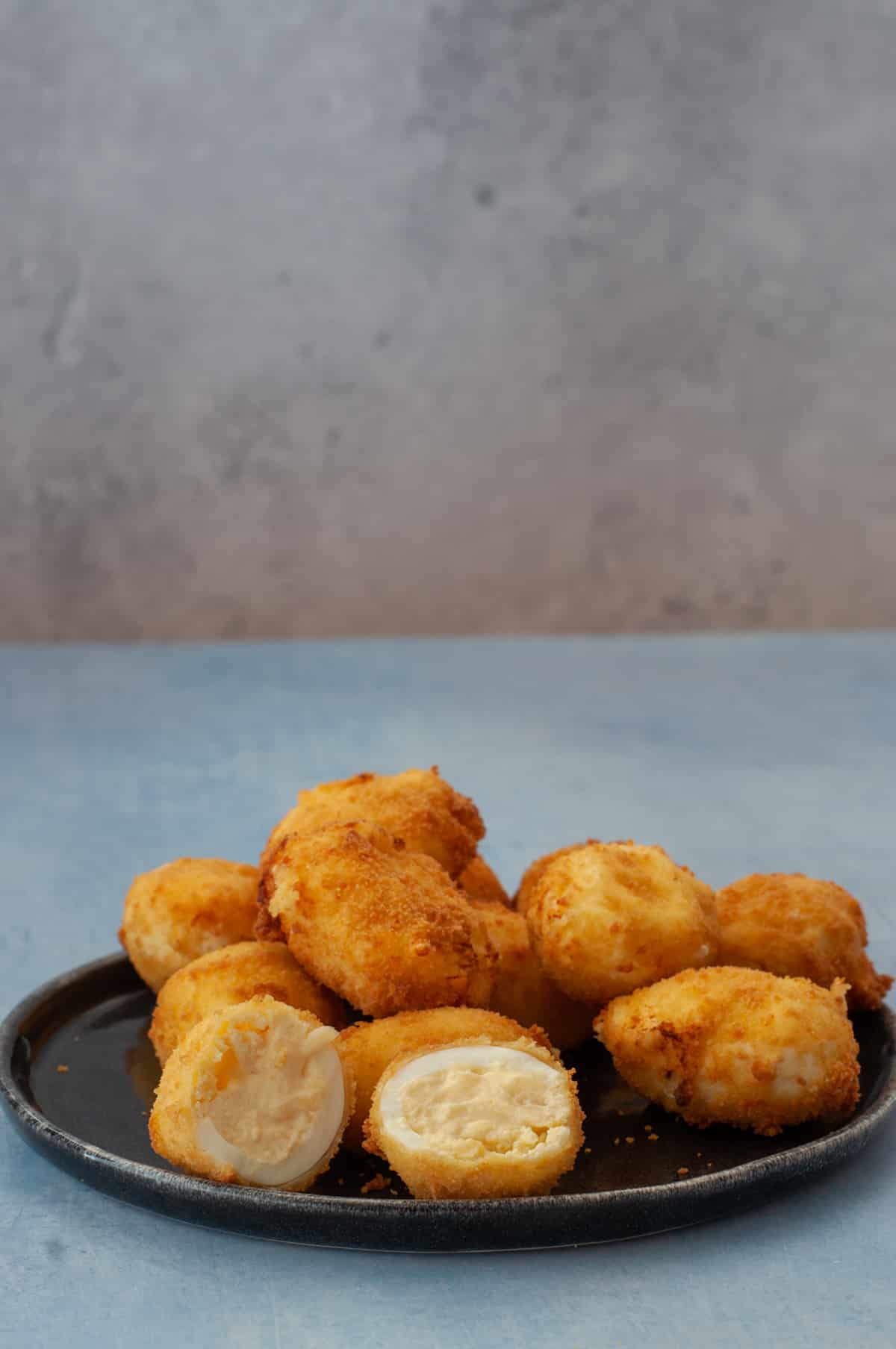
If you are making any of these Italian Deep Fried Deviled Eggs With Ricotta Filling, leave your comment below I would like to hear from you. You can find more delicious ideas if you FOLLOW ME on Facebook, YouTube, or sign up to my newsletter.

📋Italian Deep Fried Deviled Eggs With Ricotta Filling
Ingredients
For the stuffing
- 1 ¼ cup ricotta
- 5 tablespoon Parmesan cheese
- 1 pinch nutmeg
- salt & pepper
For the coating
- ½ cup flour
- 2 fresh eggs
- ½ cup breadcrumbs
- ¼ gallon vegetable oil for frying
Equipment
Instructions
Boiling the Eggs
- Place eggs in a pot of cold water.6 boiled eggs
- Bring to a boil, then lower the heat and simmer for about 9-12 minutes.
- Transfer the boiled eggs to a bowl of ice water (or running water) to cool.
- Peel the eggs once cooled.
Preparation of Filling
- Cut boiled eggs in half lengthwise and remove the yolks.
- Mash the yolks with the back of a fork in a medium bowl.
- Add ricotta cheese, Parmesan cheese, nutmeg, salt, and pepper.1 ¼ cup ricotta, 5 tablespoon Parmesan cheese, 1 pinch nutmeg, salt & pepper
- Mix until smooth.
Filling and breading the Eggs
- Prepare the dredging station with three separate shallow bowls: one with flour, one with beaten eggs, and one with bread crumbs.½ cup flour, 2 fresh eggs, ½ cup breadcrumbs
- Fill each egg white half with the egg yolk mixture
- Use enough stuffing to shape it into a whole egg.
- Dredge each reconstructed egg in flour, dip in the beaten egg, and coat with bread crumbs.
Frying the Eggs
- Heat oil in the deep fryer or skillet to 350°F (175°C).¼ gallon vegetable oil for frying
- Carefully place a few breaded eggs in the hot oil.
- Fry until golden brown, turning occasionally to ensure even cooking.
- Remove with a slotted spoon and place on paper towels to drain excess oil.
- Serve immediately while still warm
Video
Notes
- Avoid Over-Seasoning: Avoid overpowering ingredients like garlic powder or chili powder in the egg mixture. These strong flavors can mask the delicate balance of the original recipe.
- Dip Choices: Given that these deviled eggs already incorporate the flavors of Parmesan and ricotta, it's best to steer clear of other dairy additions. Sweet pickle relish, sour cream, and Greek yogurt might be common in other variations of deviled eggs, but they aren't appropriate for this traditional Italian dish.
Nutrition
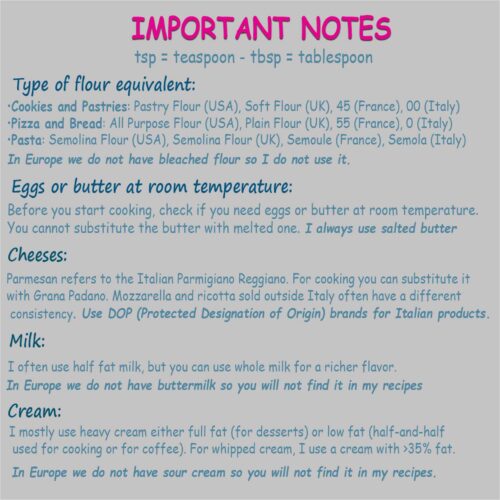



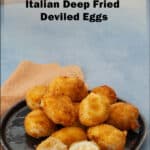


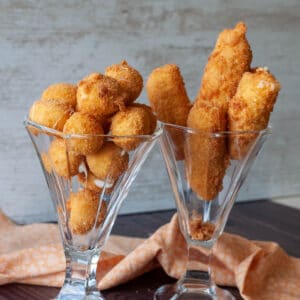

Leave a Reply